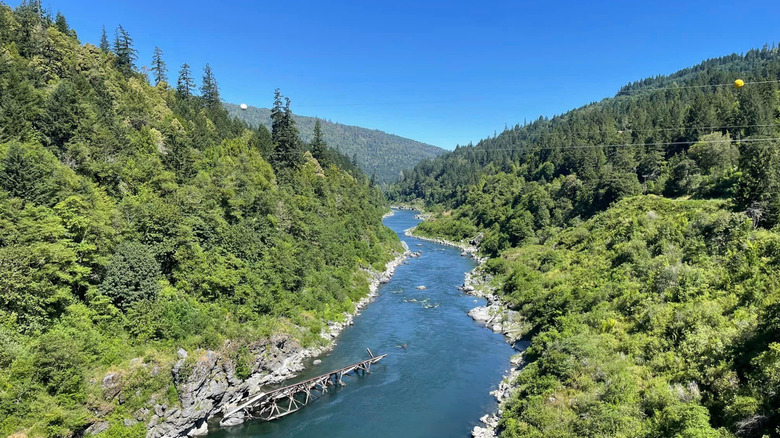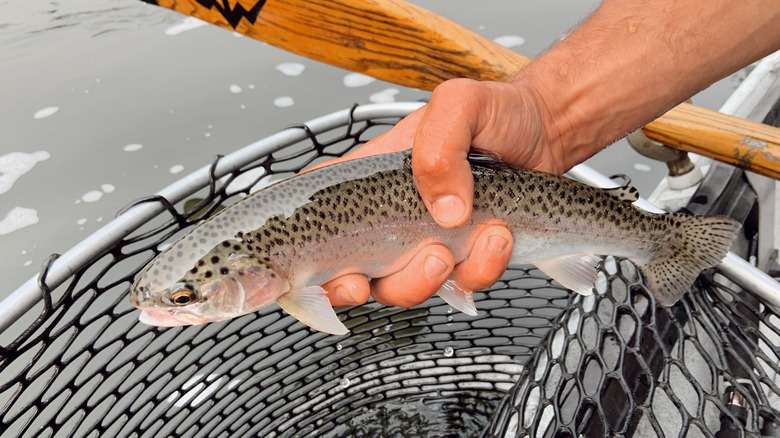Salmon Have Returned To Heal This River That Crosses Oregon And California For The First Time In 100 Years
The Klamath River stretches about 260 miles from southern Oregon's beautiful Klamath Basin to northern California, and it has been the target for the largest dam removal project in history. This controversial project aimed to remove four hydroelectric dams along the river, which were built in the early 20th century to support growing industries and residential neighborhoods. Building these dams, however, disrupted natural wildlife and disturbed the river's ecosystem, including salmon populations, which have not thrived in the river ever since the dams were constructed between 1918 and 1966.
Environmentalists praised the $500 million project, seeing the removal of these dams as a step towards sustainability, especially since upgrading the dams to meet current safety and environmental standards would cost far more. Taking down the dams, experts say, has addressed critical issues like toxins in the water, algae blooms, and tepid temperatures, which make it an ideal place for wildlife to return after decades and for adventuring like camping and rafting along the vast river.
However, the project didn't come without risks. Some said that the disruption to the sediment would cause fish kills in the short term and decrease the value of waterfront properties. More saw the removal of these dams to be government overreach and detrimental to their rural communities, since the dams provide enough electricity for 70,000 homes. Many also relied on the reservoirs for firefighting, farming, and recreation, which caused significant distress when the removal of the dams coincided with droughts. Supporters of the project felt that these households reliant on the dams could find other renewable alternatives, but critics of the dam removal say they expect the change to result in more carbon emissions.
The Klamath River is thriving one year later
So how did the project hold up? Well, the Klamath River is thriving. Damon Goodman, Mount Shasta-Klamath's regional director for California Trout, said via Lost Coast Outpost, "What the fish have shown us is something extraordinary. The river seemed to come alive almost instantly after removal, and the fish returned in greater numbers than I expected, and maybe anyone expected."
Many Native American tribes are also celebrating the return of the salmon on their historic lands, seeing the change as an opportunity for the land to heal. And heal it has. While there was a temporary disruption in the sediment as scientists predicted, temporarily decreasing the amount of oxygen in the water, data collected by the Karuk Tribe shows that water quality samples went from 58% testing as harmful to 100% testing as safe. The problems with water temperature, algae blooms, and even the sediment disruption have all pretty much vanished.
Today, officials are doing their best to monitor the health of the river and the success of the project with limited federal funding and new fish-counting technology. The Massachusetts Institute of Technology and CalTech have partnered with them to build a sonar imaging platform that utilizes AI to give environmentalists real-time updates so that this river can be a model for future restoration projects. While the area still offers some amazing farm-to-table dining, farmers have been hit hard by the project, and some have had to either reduce or stop production due to a lack of water. At the very least, the return of the salmon is a milestone worth celebrating.

